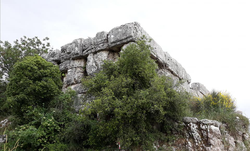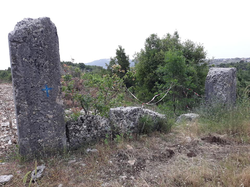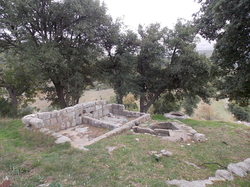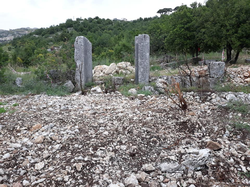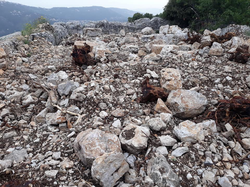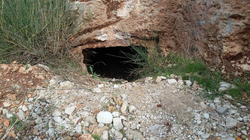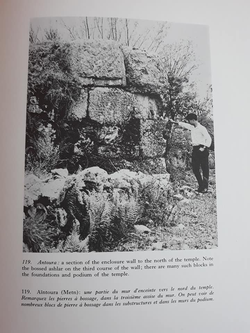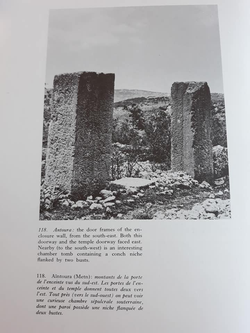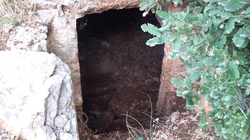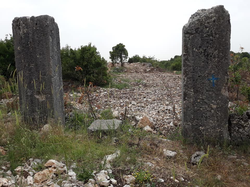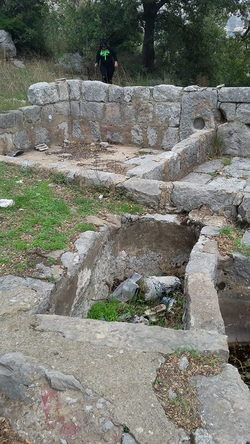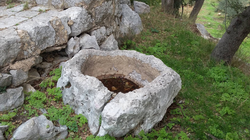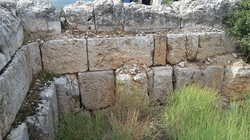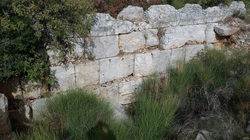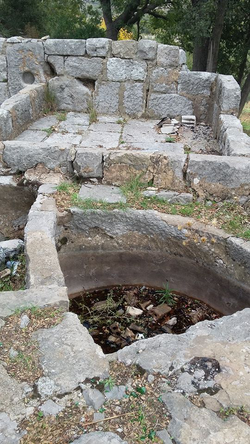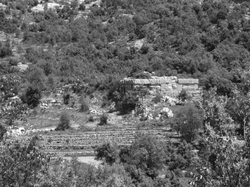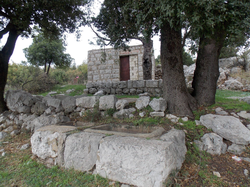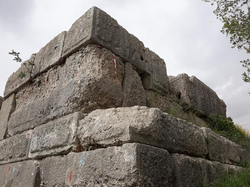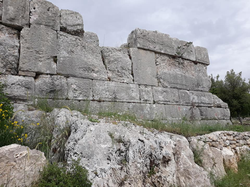Mtein

Mtein
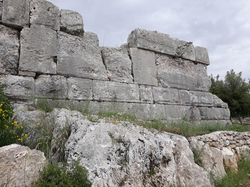
Mtein temple (credit Hagop Kazazian)
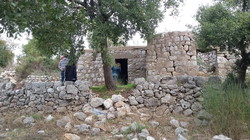
Mtein ancient village (credit "Walk the town" Facebook Group)
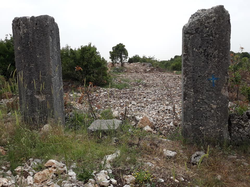
Mtein temple (credit Hagop Kazazian)
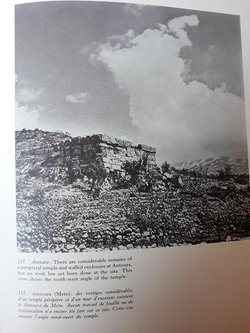
Mtein temple image from George W. Taylor's "The Roman Temples Of Lebanon - A Pictoral Guide" 1967 (credit Hagop Kazazian)
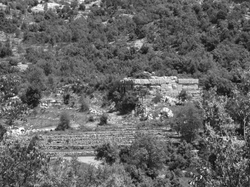
Fig. 151 from Aliquot - Aintoura (34): The sanctuary, north west veiw (2005).
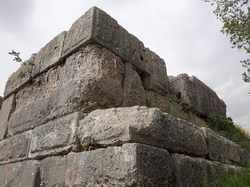
Mtein temple block detail (credit Hagop Kazazian)
Temple and ancient village
Near the village is an archaeological site that is one of the temples of the Beqaa Valley, m entioned in archaeological books as the temple ofAtintat el-Metn, known locally as**Bourj el-Mseika.
[3]George F. Taylor visited the temple in the 1960s and called itAntouraandAïntoura (Metn).**Taylor described it as a peripteral temple and noted bossed ashlar blocks in the foundations, podium and third course of the wall.
[26]****
The temple was part of an architectural complex of monuments, suggested to have been an ancient village that have never been excavated or studied properly.
[28] No inscriptions, sculptures have been found there and the deity the temple was dedicated to remains unknown.
Around early 2001, the temple was partially demolished by a bulldozer in broad daylight.
Archaeologist Rolland Jammal commented on this, saying*"* *according to its architecture, one can say that it is peripterous, surrounded on all sides by a colonnade of which nothing is found today.
No trace of columns or capitals.
Moreover, in the current state of the temple, it is impossible to locate the cella or the exact boundaries of the prayer hall because the imposing blocks of stone which delimited them were dismounted to let the bulldozer through, of which we still see the tracks on the ground.
Placed inside the temple, on the foundations of the east wall, the huge machine dug three-meter deep holes in the base of the podium."
[3]*
Three huge blocks of carved stones are erected on its south side and thus mark the entrance doors of the whole worship complex.
The northern part of the temple has been turned into a gaping hole.
And the huge blocks of broken stone are piled up around the temple or thrown a little further.
Jammal noted that *"gathering information about the temple after this act of vandalism can be called a difficult mission.
Archaeological soils have been disturbed and even destroyed in the holiest part of the monument.
To evaluate the damage, it is necessary to carry out a cleaning of the site and to carry out architectural surveys.
Subsequently, to understand the site, it is necessary to carry out archaeological excavations."
[3]*
Chairman of Mtein village council, Kamal el-Hajj, said that, aware of the ongoing vandalism, he sent letters to the Directorate General of Antiquities asking him to help finance a guardian for the site, or close it from public access, to which he received no reply [28]
A conference on the inventory of monuments of their village was made by archaeologist Ibrahim Kawkabani where the president of the village council said*"we realized the degradation of the site and we tried to safeguard it."L'Orient Le Jour noted that"goodwill alone does not solve such problems.
The number of unknown and neglected archaeological sites in Lebanon far exceeds those listed on the national heritage list.
If the maintenance and preservation of these are more or less assured, it is not the same for others.
The Mtein temple is one of many.
These thousand-year-old sites are the playgrounds of clandestine looters, so much so that it should be possible to create a list of endangered national heritage."* [28]
Julien Aliquot referenced the temple site in 2008 asAintoura, recording that the sanctuary was set on a polygonal terrace with long sides to the north and south marking a detachment from an outcrop of rocks, opening to the east through a monumental door who's two jambs are in place.
[20] Only the foundations and podium remain, made of giant Megalithic blocks.
Aliquot notes the ruins of a destroyed village and sarcophagus were found next to the sanctuary and that the temple was damaged by clandestine excavations of treasure hunters.
[22] **
**
Hagop Kazazian visited and took photographs of the site on 12 June 2018, reporting *"This is not surprising, after all this site was never excavated, recently the sanctuary area was destroyed by bulldozers and the entire temple derbis were filled in the adytum.
Currently, there is a plan for surfacing a road passing by the remains of the temple's main door which may cause severe damage, I'm afraid of complete destruction of the entrance door.
Systematic excavations would u ndoubtedly unearth additional remains of historical value, this temple was located on ancient Lebanon's pilgrimage road from Beirut on the way to Heliopolis (Baalbeck), close to today's Tarchich Highway that links Beirut to Zahle.
It is the second temple found in Matn district, beside Beit Mary's Deir al-Kalaa."
[16]*
**
